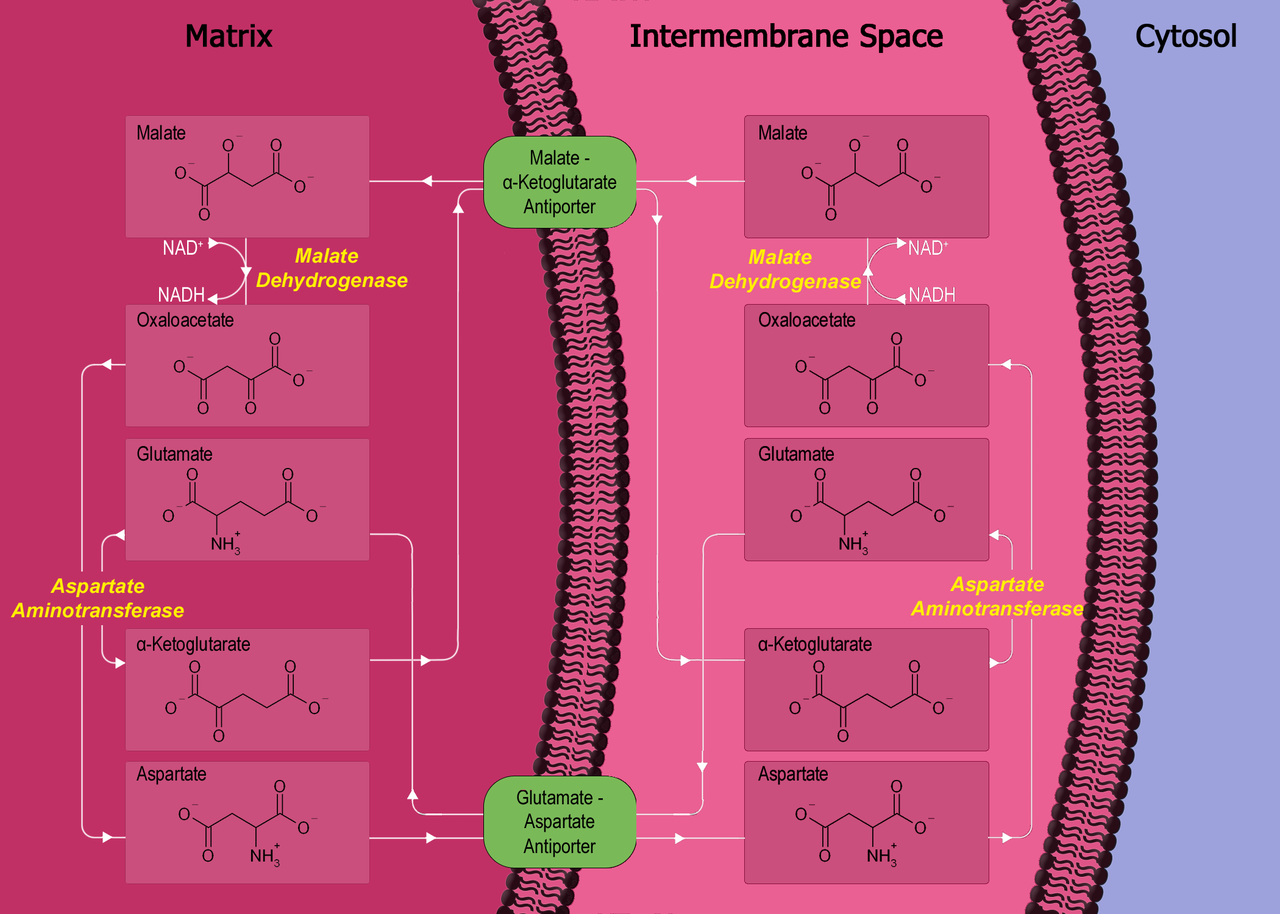D
deleted647690
In Kaplan biochem, they show cytosolic OAA reduced to malate so that it can cross the inner mitochondrial membrane from the cytosol into the mitochondrial matrix.
I'm confused by this, because isn't the mitochondrial matrix separated from the cytosol by both an inner and outer mitochondrial membrane? The diagram in Kaplan makes it look like there is only one membrane between the cytosol and matrix.
This diagram on wikipedia seems more accurate. However, it shows OAA as existing in the intermembrane space, contrary to what Kaplan says (Kaplan says it exists in the cytosol)

So, what is correct here?
Here is the diagram from Kaplan, which I'm not sure is accurate.

I'm confused by this, because isn't the mitochondrial matrix separated from the cytosol by both an inner and outer mitochondrial membrane? The diagram in Kaplan makes it look like there is only one membrane between the cytosol and matrix.
This diagram on wikipedia seems more accurate. However, it shows OAA as existing in the intermembrane space, contrary to what Kaplan says (Kaplan says it exists in the cytosol)

So, what is correct here?
Here is the diagram from Kaplan, which I'm not sure is accurate.

